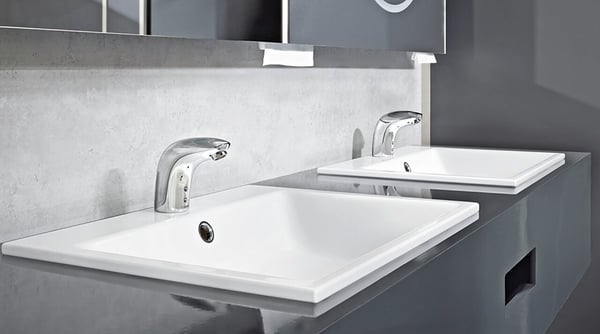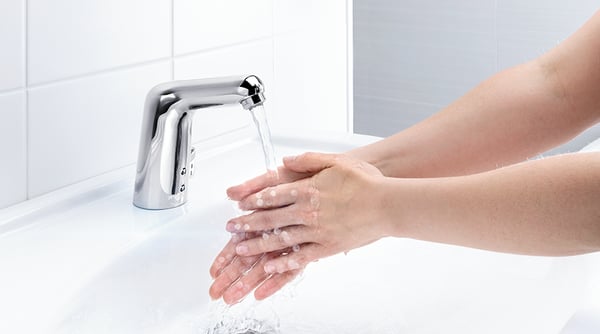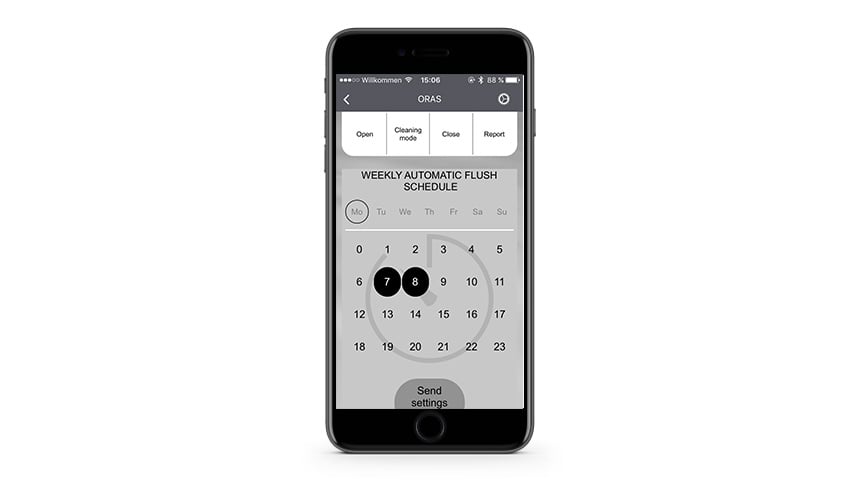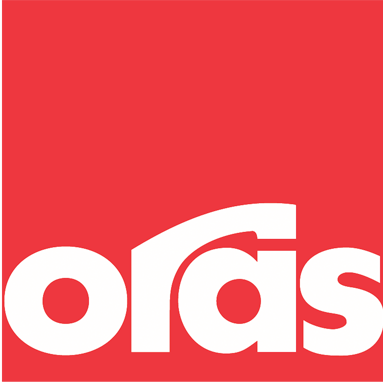Summer always presents a heightened risk of legionella. What are some easy solutions that public buildings can use to prevent their growth and spread?
 In summer topic, many public buildings increases the risk for legionella to grow and spread.
In summer topic, many public buildings increases the risk for legionella to grow and spread.
According to the European Centre for Disease Prevention and Control, the number of cases of Legionnaires’ disease in Europe nearly doubled between 2016 and 2018. Awareness of the disease is also on the rise, especially in health and care facilities, schools and rental properties, where preventive measures can make a difference.
People catch Legionnaires' disease by inhaling small droplets of water that contain a bacterium called legionella pneumonphilia. Feeding on a source of nutrients such as sludge, scale or rust, the bacteria thrive in warm temperatures (20-45° C). They are primarily found in stagnant water in water pipes and can be spread through the community via aerosol spray from cooling towers, water fountains, faucets or showers.
Dormant businesses and apartments
Higher summer temperatures increase water temperature in the pipe system – that’s why summer is prime time for legionella spread. This summer presents a particular risk following the COVID-19 pandemic as many businesses and premises have been closed for an extended period. Vacant rental apartments, hotel rooms and public buildings may be at higher risk as their faucets and showers have not been flowing. Business owners and property managers are being encouraged to put preventive solutions into place.
 Most Oras touchless washbasin faucets are possible to control via an app, which makes it easy to set up automatic flushing at set intervals.
Most Oras touchless washbasin faucets are possible to control via an app, which makes it easy to set up automatic flushing at set intervals.
Health and care considerations
An ageing population also imposes a greater threat in Europe. The elderly and people with weak immune systems are at higher risk of developing severe symptoms of Legionnaire’s disease. That’s why strict hygiene standards are required in health and care facilities, particularly in intensive care units. Faucets in vacant patient rooms need regular flushing, which hospital staff often don’t have time to do manually.
 Faucets in vacant patient rooms need regular flushing, which hospital staff often don’t have time to do manually.
Faucets in vacant patient rooms need regular flushing, which hospital staff often don’t have time to do manually.
Smart faucets are a solution
Touchless faucets with smart functionality, such as the Oras Electra, are becoming a popular solution in public buildings and health and care facilities. Most Oras touchless washbasin faucets are possible to control via an app, which makes it easy to set up automatic flushing at set intervals. You can create a weekly flushing schedule and sign up for email reports for help controlling the activities. This solves the problem of stagnant water and makes it harder for the bacteria to grow and flourish.
 With Oras App you can create a weekly flushing schedule.
With Oras App you can create a weekly flushing schedule.
For specified products (such as Oras Clinica thermostats), Oras have also launched a new legionella flushing feature that uses thermal disinfection at 70° C to kill any legionella bacteria. This is particularly beneficial for health and care facilities in countries where the maximum hot water temperature is not hot enough to kill the bacteria.
Some faucets lines, such as Oras Clinica and Oras Medipro, are designed with laminar flow. Especially important for the health and care sector, laminar flow ensures that no aerosol droplets are produced at the faucet reducing the chance of infected droplets filling the air.
 '
'





 In summer topic, many public buildings increases the risk for legionella to grow and spread.
In summer topic, many public buildings increases the risk for legionella to grow and spread. Most Oras touchless washbasin faucets are possible to control via an app, which makes it easy to set up automatic flushing at set intervals.
Most Oras touchless washbasin faucets are possible to control via an app, which makes it easy to set up automatic flushing at set intervals. Faucets in vacant patient rooms need regular flushing, which hospital staff often don’t have time to do manually.
Faucets in vacant patient rooms need regular flushing, which hospital staff often don’t have time to do manually. With Oras App you can create a weekly flushing schedule.
With Oras App you can create a weekly flushing schedule.
